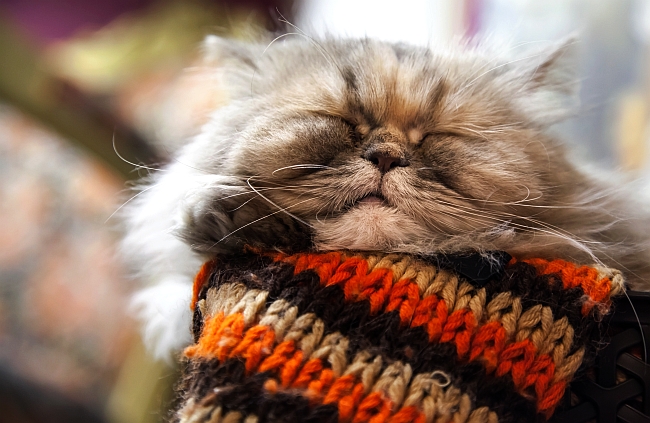
While the simple answer to this question would be yes or no, the reality is a bit more complex than that. Most scientists and animal behaviorists believe that several factors indicate that felines do dream just like humans. When in a deep slumber, cats twitch, drool, even run, mutter or whimper in their sleep. However, it is difficult to prove whether or not a kitty does experience dreaming, simply because we cannot see what they witness nor share the experience with them. That said, we may make scientific observations based on what is known about sleep, and through their behaviors and brain patterns while sleeping.
How Sleep Works
First of all, there are two primary types of sleep, which are: rapid eye movement (REM) and non-rapid eye movement (non-REM). During a sleeping cycle the REM stage is the deepest part of sleep, and can be very tough to awaken the individual out of. The eyes will move back and forth under closed lids, as if watching some intense scene play out in front of them. It is during this part of the cycle that the dream is most active, and where motions and sounds are likely to occur. Images experienced during rapid eye movement can last longer than non-REM snapshots, and might be sourced not only from the day’s experiences but also from earlier memories in the past days, months and years. Many believe the non-REM stage involves much shorter dreams, impressions and glimpses from events earlier in the day. The full REM cycle occurs roughly every 25 minutes for cats, and 90 minutes for humans.
Animal behaviorist Amy Shojai claims that a feline’s core senses remain active during over 70% of the cat’s sleep. While a cat is mid-REM cycle, she still would be able to detect the scent of a mouse or hear the flutter of a bird’s wing close by and could awake quickly to react. However, aside from these abilities, a cat’s body movement is limited by what is called a “suppression mechanism” which keeps them from exercising full motor abilities, like sleepwalking or physically acting out their dream.
Studies and Suppositions
The basis for the belief that cats dream is not only due to the evident twitching, meowing and shuffling that happens when a kitty sleeps. Matthew Wilson (professor in neurobiology, memory and cognitive sciences at MIT) recorded the brain activity of rats by using electrodes during their regular daily activities. When the rats slept, Wilson noticed that the dreaming brain patterns mimicked those which occurred while the rats had been running on track wheels earlier during their waking hours. This led to the belief that animals experience memory and visualization during sleep similar to the way humans do. The part of the brain which processes memory is called the hippocampus. Since the hippocampus of the rat has all the same aspects as that of a human, a dog or a cat, we can assume that a feline does dream as well. Whether they dream about chasing a mouse, swatting at imaginary butterflies, or eating a delicious plate of mackerel, we will never know!
NOTE: If you want to observe your cat’s sleep cycle, you are in luck! Most felines sleep up to 17 hours a day, and are likely to take a long snooze regularly (especially on cold, cloudy and rainy days).

